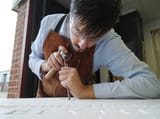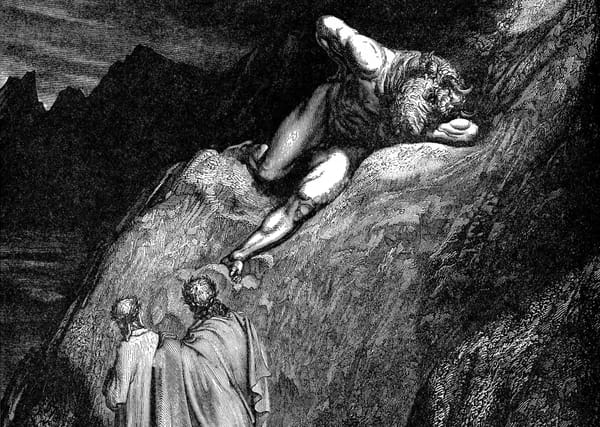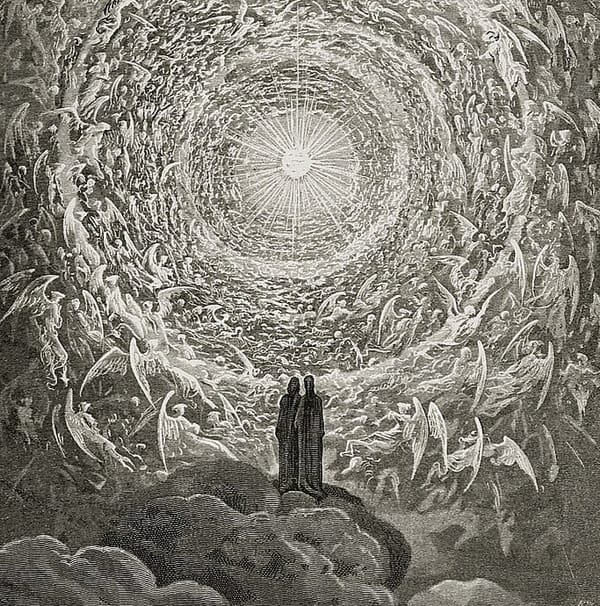Time travel with San Lorenzo, in Naples!
Hey there! If you’re planning a trip to Naples (Italy), add the Basilica of San Lorenzo Maggiore to your itinerary as I did. This stunning…
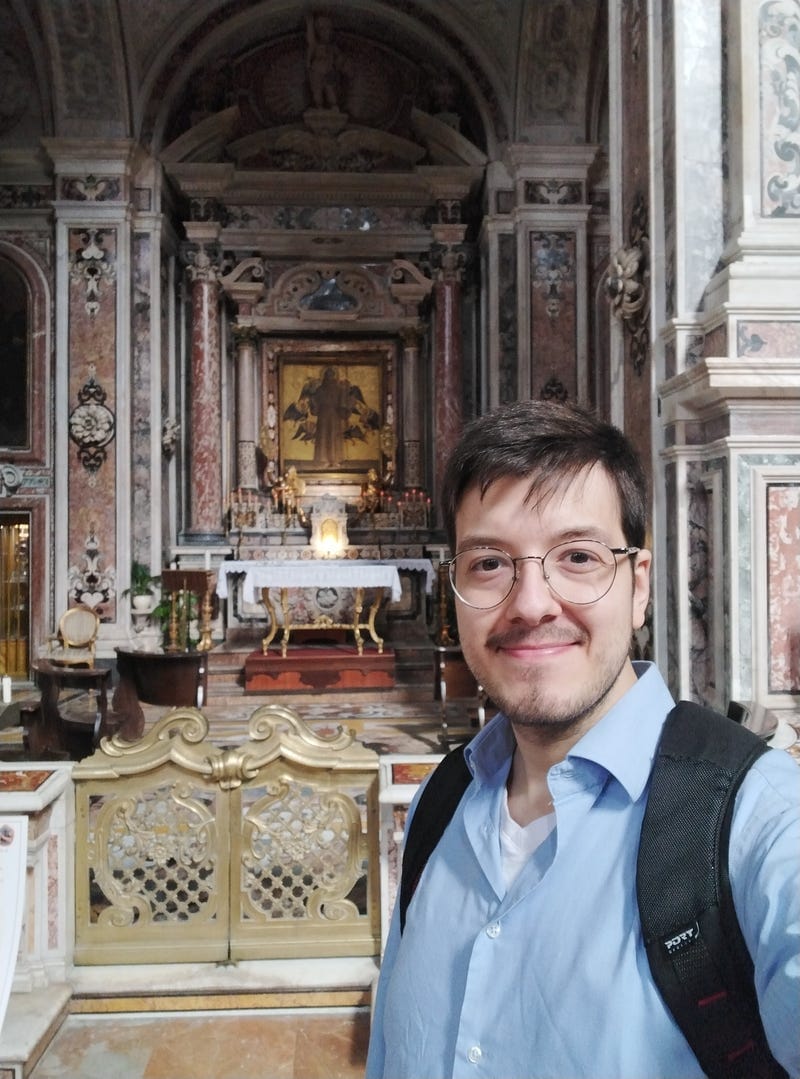
A time capsule capable of taking you back to the Gothic period, then transporting you all the way into Baroque, but how?
Hey there! If you’re planning a trip to Naples (Italy), add the Basilica of San Lorenzo Maggiore to your itinerary as I did. This stunning church has a long and fascinating history and is a must-see for anyone interested in art, architecture, or religion.
The Basilica of San Lorenzo Maggiore is located in the heart of Naples, in the historic district known as the “Spaccanapoli”. The church was built on the site of an ancient Roman marketplace, and you can still see some of the ruins in the church’s underground archaeological museum. The current building dates back to the 13th century, but it has undergone many renovations and additions over the years.
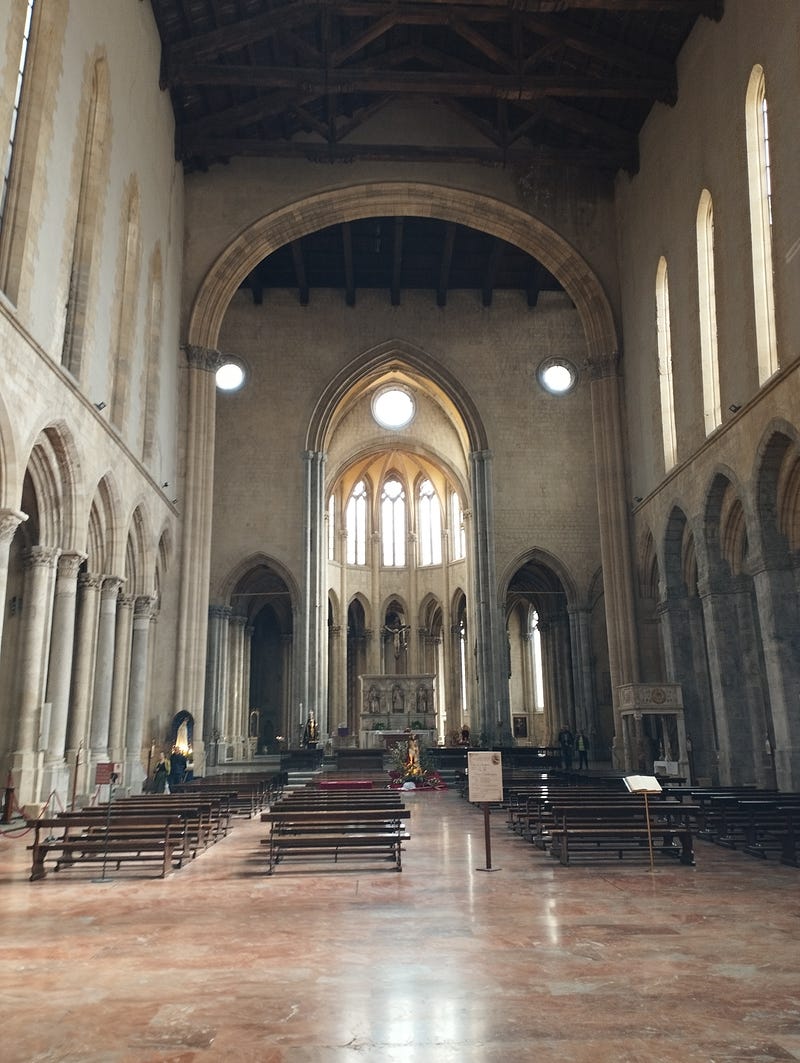
The church is designed in the classic Latin cross style and features a whooping 23 side vaults! Its history crosses the Gothic world and the Italian one all the way to the Baroque period.
As you can see in the picture above (and below), down the end, there are three statues. These were sculpted by “Giovanni Merliano da Nola”, with the statue of S. Lorenzo in the centre, to the right S. Francis and to the left S. Anthony (made in 1500).
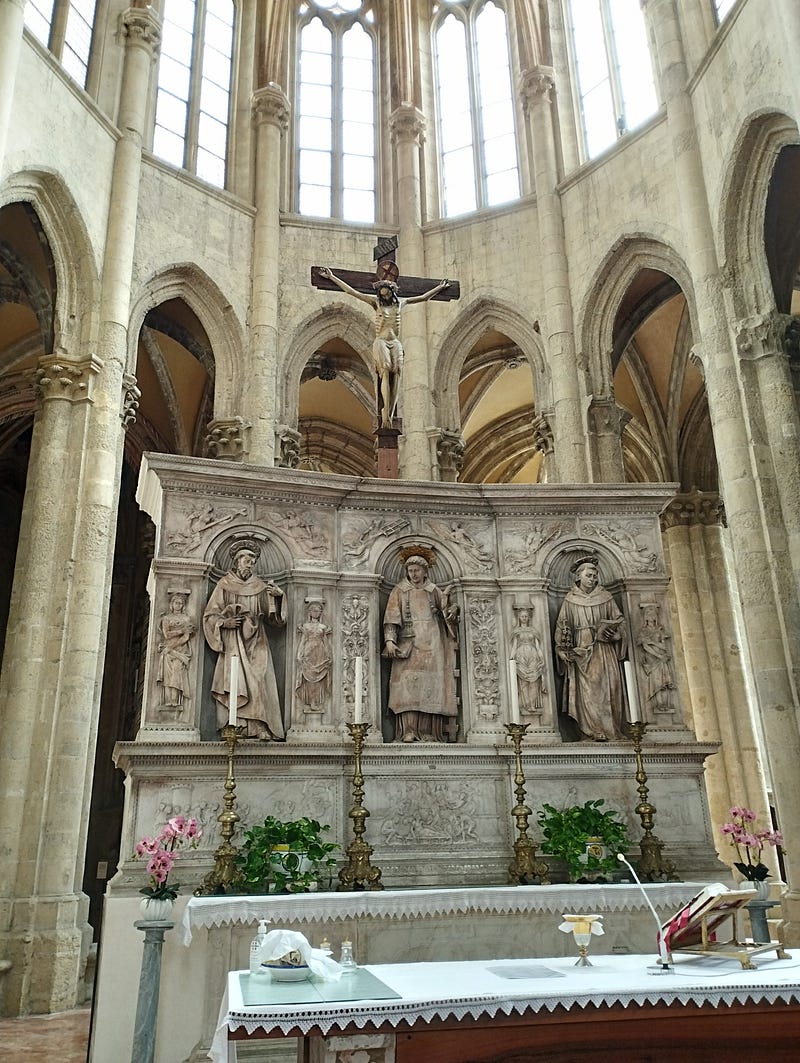
Below the statue of S. Lorenzo, is sculpted with fine realism its martyr.
Immediately to the left of this altar, we have another small altar dedicated with extremely fine details to S.Anthony of Padua.
About painting down the end, unfortunately, we have lost track of its original author but is thought to be “Colantonio del Fiore” active in 1500 as well.
To the right of the main altar, we have a special tomb which is the one of “Catherine of Austria” the wife of Charles, Duke of Calabria.
He is the son of King Robert of Naples and Yolanda of Aragon.
This tomb (Picture below) is the first work of the famous sculptor from Siena Called “Tino da Camaino” and was made in 1323.
The whole organism is quite complex, both in the details but also for the gothic writing sculpted directly into the marble. Supported by 4 columns, the sarcophagus is held by two figures representing: Speranza (Hope) and “Carità” (Generosity).
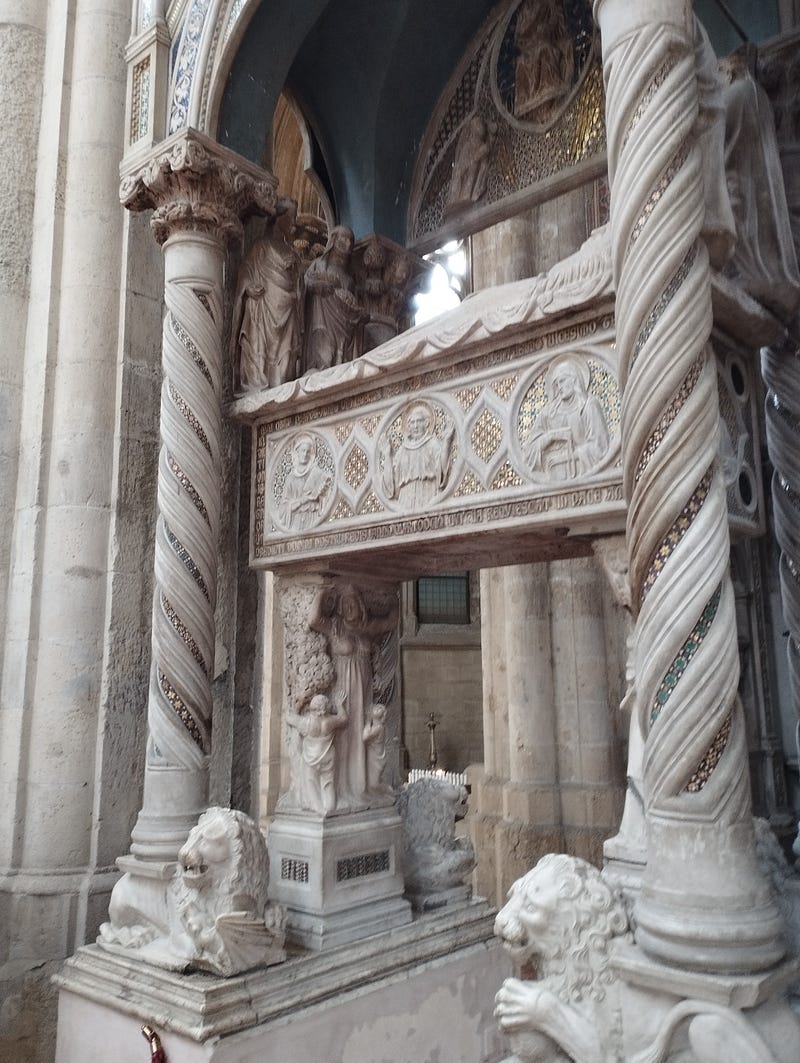
Last but not the least, being a stonemason myself, I had the chance thanks to the Priest “Domenico Sportiello” to copy the writing of an ancient memorial dedicated to “ Giovanni Maria Puderico” an Archbishop of Taranto now located in this Basilica.
Why this writing is so important? you may ask. Well, it is one of the few Renaissance Roman-style writing I could find kept in sharp conditions, with the chiselling mark still present.
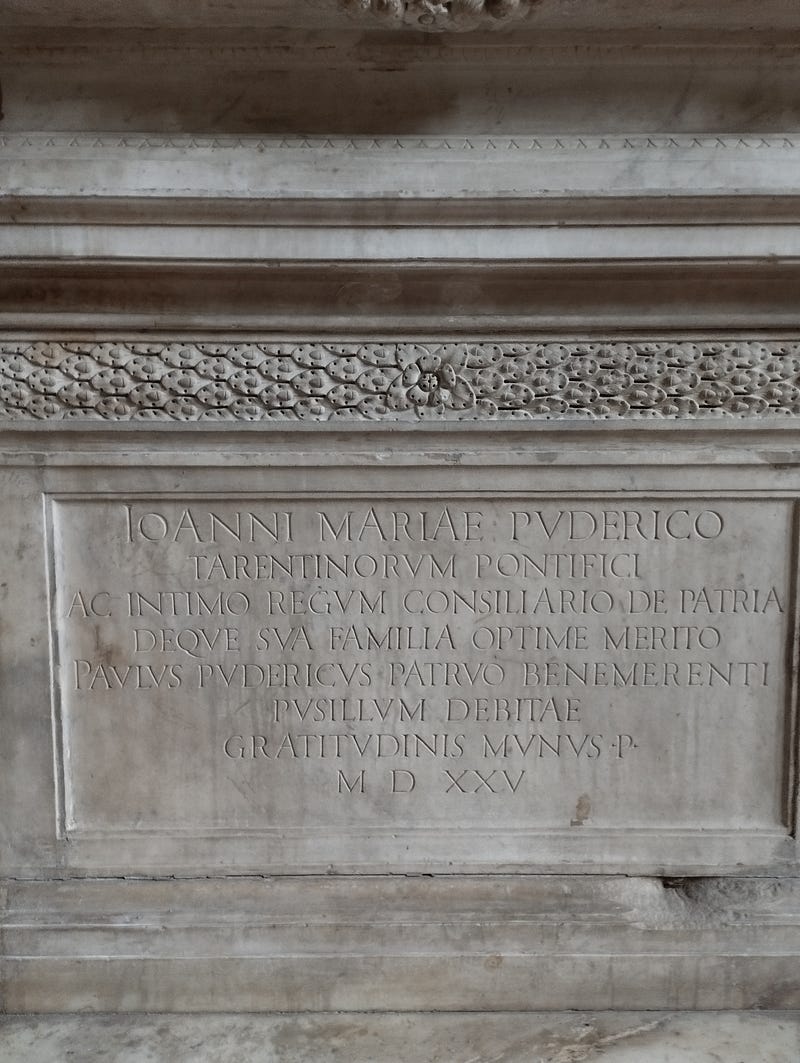
There is so much more to see in this basilica and unfortunately, it can’t fit all in one article, so make sure you visit (or contact me directly)!
I want to give special thanks to the priest and brother “Domenico Sportiello” for allowing me to take an impression of this writing and also for showing me around the Basilica.
If you want to know more about Spaccanapoli and the wonders hidden in it, make sure to read my other article on S. Gregorio Armeno here!
Find some useful links down here, and if you liked the article please consider to like and follow, helps a lot!
Hope you enjoyed it and see you next, bye-bye!
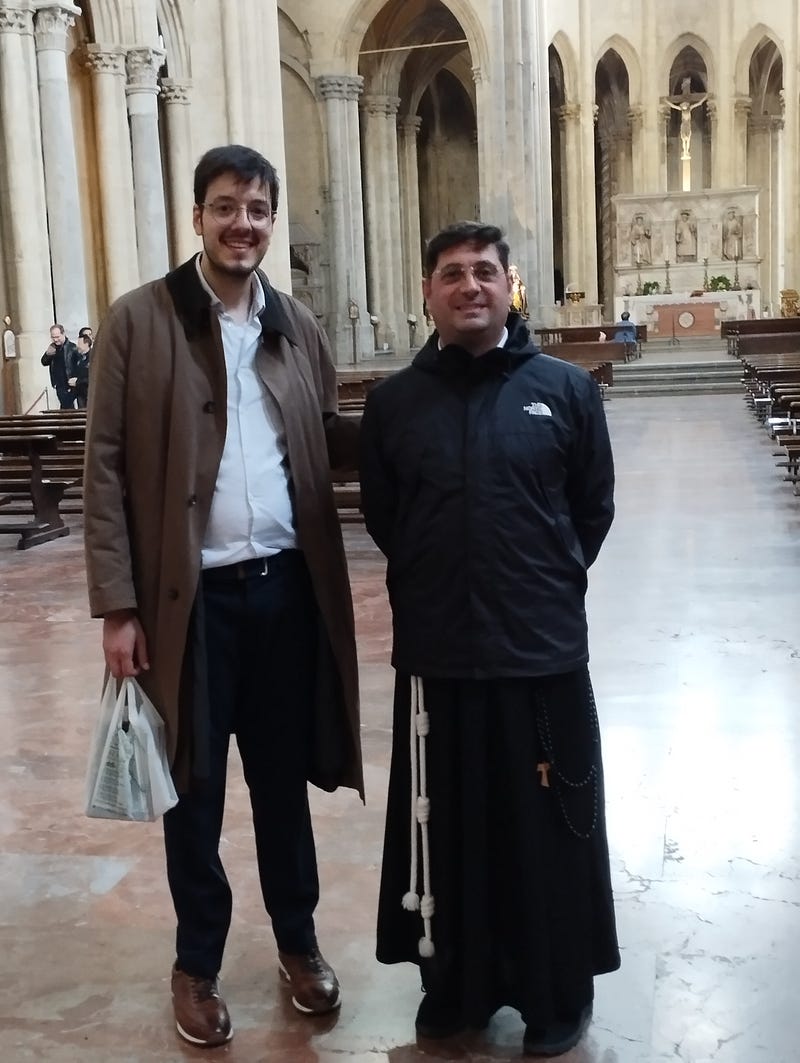
Ioanni Mariae Puderico(memorial)
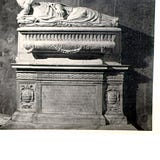
Catherine D’austria Monument
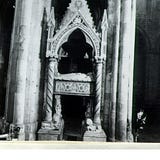
Basilica website

